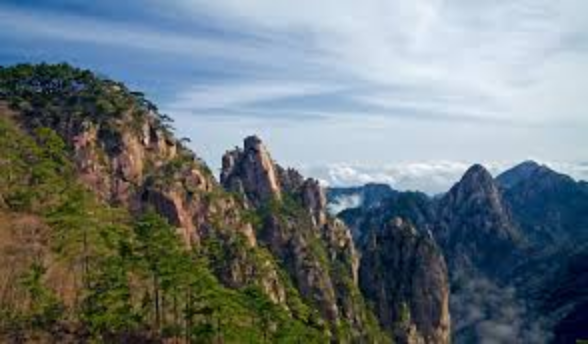
How High is Huangshan in China?
Huangshan, literally translated as "Yellow Mountain," is a renowned mountain range located in southern Anhui province in eastern China. Famous for its soaring peaks, often shrouded in mist, it's a UNESCO World Heritage Site and a frequent source of inspiration for Chinese art and literature. But exactly how high is Huangshan?
The Height of Huangshan's Peaks
While many might refer to "Huangshan" as a single mountain, it's important to remember that it's actually a mountain range. Within this range, there are numerous peaks, with varying heights. The highest peaks within Huangshan reach an impressive elevation of over 1,800 meters above sea level.
Here's a table highlighting the three most famous peaks of Huangshan and their respective heights:
| Peak Name | Height (meters) | Height (feet) |
|---|---|---|
| Lotus Peak | 1,864 | 6,115 |
| Bright Peak | 1,840 | 6,004 |
| Celestial Peak | 1,829 | 5,999 |
As you can see, Lotus Peak stands as the tallest, making it a popular destination for hikers wanting to experience the "top" of Huangshan.
Understanding the Significance of the Height
The height of Huangshan’s peaks contributes significantly to its unique environment and captivating beauty.
- Above the Clouds: The elevation often places these peaks above cloud level, creating the famous "sea of clouds" phenomenon. This breathtaking sight, where mountain tops appear to float on a bed of fluffy white clouds, is a major draw for visitors.
- Unique Microclimate: The height also creates distinct microclimates on the mountain. Temperatures are generally cooler at higher elevations, and the peaks often experience higher precipitation levels, leading to the lush vegetation and unique flora and fauna found in the region.
- Stunning Views: The high vantage points offer breathtaking panoramic views of the surrounding landscape. From the peaks, visitors are treated to a tapestry of granite cliffs, verdant pine forests, hot springs, and waterfalls that stretch as far as the eye can see.
Huangshan: More than just Height
While the impressive height of Huangshan undoubtedly contributes to its allure, it’s important to remember that Huangshan offers much more than just elevation.
Here are some other aspects that make Huangshan so special:
- Unique Granite Formations: Huangshan is renowned for its strangely shaped granite peaks and rocks, sculpted over millennia by glaciers and erosion. These formations often resemble human figures, animals, and objects, adding to the mythical quality of the landscape.
- Ancient Pine Trees: Huangshan is home to a unique species of pine tree, the Huangshan pine (Pinus hwangshanensis). These trees, known for their resilience and ability to thrive in harsh conditions, cling precariously to the mountain sides and are often hundreds of years old.
- Cultural Significance: Beyond its natural beauty, Huangshan holds a prominent place in Chinese culture and art. It has inspired countless poems, paintings, and literary works throughout history.
FAQs
1. What is the best time to visit Huangshan to experience the "sea of clouds"?
The "sea of clouds" is most common during the spring and autumn months, with November and December being particularly favorable.
2. Is it difficult to hike to the top of Huangshan's peaks?
There are well-maintained trails and cable cars available to reach the main peaks of Huangshan. However, hiking to the summit does require a moderate level of fitness, and some sections can be steep.
3. Are there accommodation options on Huangshan?
Yes, there are hotels and guesthouses located on the mountain itself, allowing visitors to spend the night and experience the sunrise from above the clouds.
Huangshan is a truly remarkable destination, and its impressive height is just one of the many factors that make it so special. Its combination of natural beauty, cultural significance, and breathtaking views makes it a destination that should be on every traveler's bucket list.